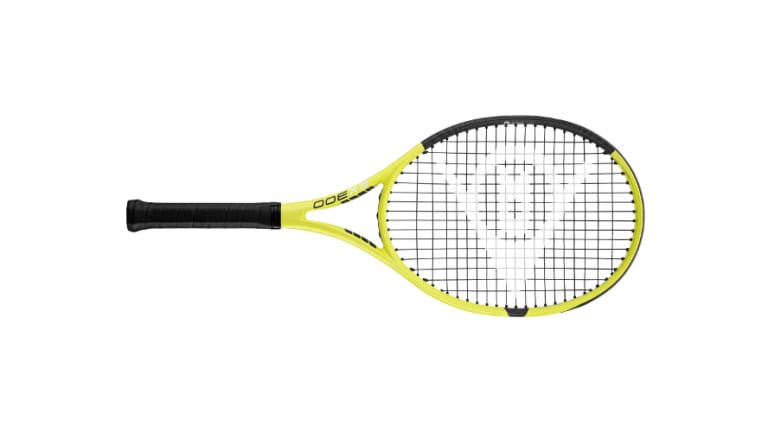Spin is a valuable commodity on a tennis court. At its base function it provides a measure of safety and control to shots to maintain consistency. Which is fine and dandy, but nobody strives for basic. Exceptional is the more aspirational goal, and that means spin-laden strokes that create heavy, formidable shots. To do that, proper technique is required, but it doesn’t hurt to have a racquet that’s a willing accomplice.
Exhibit A being the Dunlop SX 300. The racquet has always been well-suited for this task, and this latest model takes its rpm potential to another level. When compared to the prior generation, the Spin Boost shaped grommets are on more of the main strings of the update, which allow for more varied and expansive movement. The string spacing has also been widened to help create more spin, a higher launch angle, bigger sweet spot and easier depth on off-center hits.
Throughout my test with racquet the word I kept coming back to was lively. Ground strokes had tons of jump and bounded through the court causing havoc. Power was more prevalent than control, but it wasn’t an issue maintaining respectable consistency. It was the type of racquet that invited the user to take space behind the baseline and go to work bullying opponents with a barrage of inside-out forehands, or grind away with high, looping groundies. If a short ball should result, the frame had ample put-away skills.
Flattening out shots was more of a challenge, but as long as the ball was struck relatively cleanly and out in front, targeting was respectable. Problems were most glaring in situations such as catching a return of a hard serve late—if I didn’t hit it just right, missing the chance to impart enough control spin often ended up in a flier. Otherwise it was a pretty dependable returner, and capable of being abusive to anything soft.
Serving was probably my favorite portion of the test. It was one of those frames that naturally delivered extra zip to deliveries without extra effort. Yet, much like ground strokes, its ability to impart spin really raised its status, making slice serves curve like a wiffleball. Spotting the serves wasn’t radar-controlled, but it was in the neighborhood often enough. Whether going big or trying to bend the ball up or away from my opponent, it was highly effective starting points on my terms.
